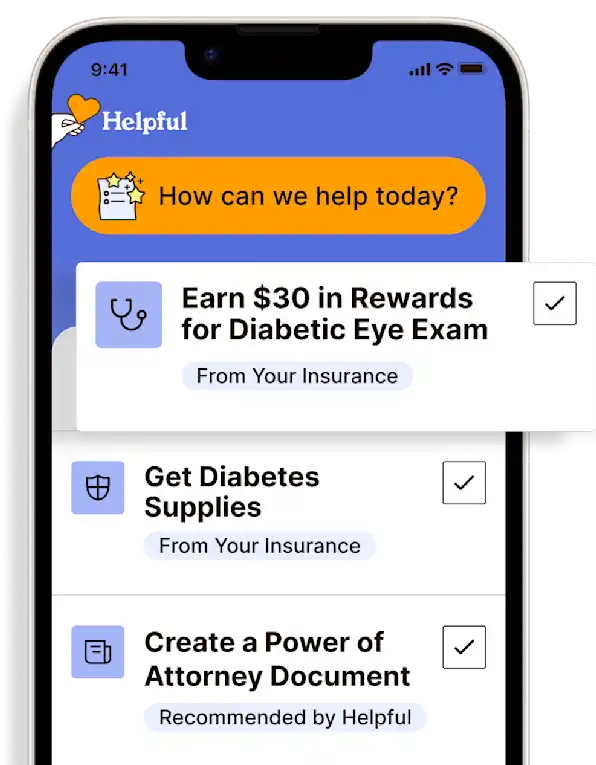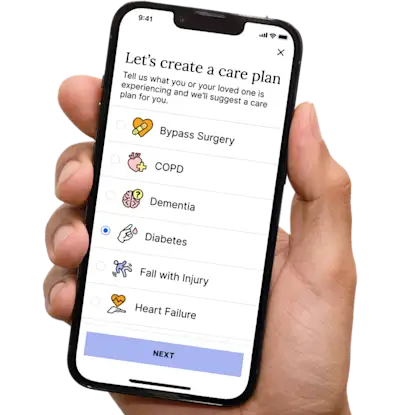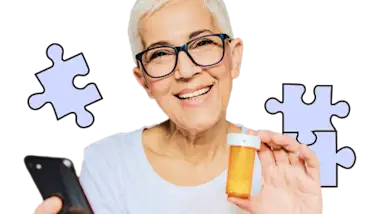AZ Blue Best Life Plus (HMO): Smoking and Tobacco Use Cessation (Counseling to stop)
Tobacco use causes cancers throughout the body, not just in the lungs of smokers. Tobacco users spend $70 per week ($280/month) on tobacco products.
Access all my benefitsGet insurance benefits, legal documents, and medical records in one place
How To Receive
Details on how to apply
Locate a smoking and tobacco cessation program that can bill the health plan (call and check with the program).
Consider getting a referral from a primary care provider (not required but may be helpful in making a decision).
Schedule an appointment to get started in the program.
Attend the program counseling sessions as scheduled and implement the interventions.
For information on cost sharing, contact the AZ Blue Best Life Plus Team at 1-800-446-8331 (TTY 711).
Find a program
Use quitlines to find State programs in all 50 states and the District of Columbia. Quitlines also have highly trained quit coaches available.
Call the CDC Quitline (800) 784-8669
Call the American Lung Association Lung Helpline (800) 586-4872
Call the National Cancer Institute Smoking Quitline (877) 448-7848
Call the American Cancer Society (800) 227-2345
Note that the quitlines are NOT a substitute for a clinical smoking cessation program, they serve as an additional layer of help.
Get more support and guidance on insurance benefits, medical records and legal forms.
Helpful brings together your insurance benefits, legal documents, and medical records in one personalized place — so you always know what you have, and never have to search again.

Up to 8 smoking and tobacco-use cessation (quit) counseling sessions within 12 months for tobacco users who do not have signs or symptoms of tobacco-related disease (such as those associated with COPD, and oral, tracheal, or lung cancer).
For those who use tobacco and have been diagnosed with a tobacco-related disease or are taking medications that may be affected by tobacco, cessation counseling is also available. Still, it requires that applicable cost-sharing be paid by the member. This benefit is not free in this case.
Each counseling attempt includes up to 4 face-to-face visits. Successful intervention for smoking and tobacco cessation begins with identifying users and appropriate interventions based on their willingness to quit.
You may hear about many options for cessation, including breaking it down into three or five steps (sometimes called “The 3 As” or “The 5 As” and sometimes “The 5 Rs”). Regardless of which option is presented or chosen, cessation therapy always begins with psychological-behavioral methods before introducing the more invasive nicotine replacement therapy (gum, patches), and anti-smoking medication is usually a last resort because it can produce unpleasant side effects.
"Going cold turkey” (quitting abruptly altogether) and self-guided use of over-the-counter nicotine replacement products have a high failure rate because there is no concentration on or support for real behavior change, which is the biggest driver for smoking and tobacco use. In other words, while nicotine is certainly addictive, smoking and tobacco use are mostly habitual. Some examples:
A cigarette always accompanies a cup of coffee or a cocktail, lighting a cigarette
Cracking the window immediately precedes putting the car in drive
Stepping away from the desk or out of an office always leads to a “smoke break”
A wad of chewing tobacco is inserted before beginning any task or project, or at defined times during a sporting event, and so forth.
Routines and behavior patterns must be addressed for cessation to succeed. Understand that it typically takes MANY quit attempts before quitting is actually achieved.
CDC
The CDC also offers smoking cessation support. Call the quitline: 1-800-QUIT-NOW (1-800-784-8669) or visit How to Quit Smoking. Quitlines provide free and confidential coaching to help you become—and stay—smoke-free. Calling a quitline might be just what you need to help you quit for good.
Technology for Health Tasks. Mental Health for the Tough Stuff.
Helpful connects your medical records, insurance, and caregiving tasks automatically. And when you need more than logistics, a therapist is here to guide you.
In-Network and Covered
For Individuals, Couples and Families
HIPAA Compliant, Data Stays Private


Healthcare Tasks Simplified

From syncing records to spotting drug interactions, Helpful does the heavy lifting, turning complex health info into clear tasks and showing you benefits you can actually use, giving you clarity and control over your care.

In-Network Mental Health

Our licensed therapists are here to support you and your loved ones through stress, burnout, and life’s hardest moments, with an inclusive, compassionate approach that works with most insurance plans.

Create Legal Documents

Plan ahead by creating will, trusts, advance directives and more, that ensure your wishes are honored in the event you can’t speak for yourself -with Helpful guiding you every step of the way.